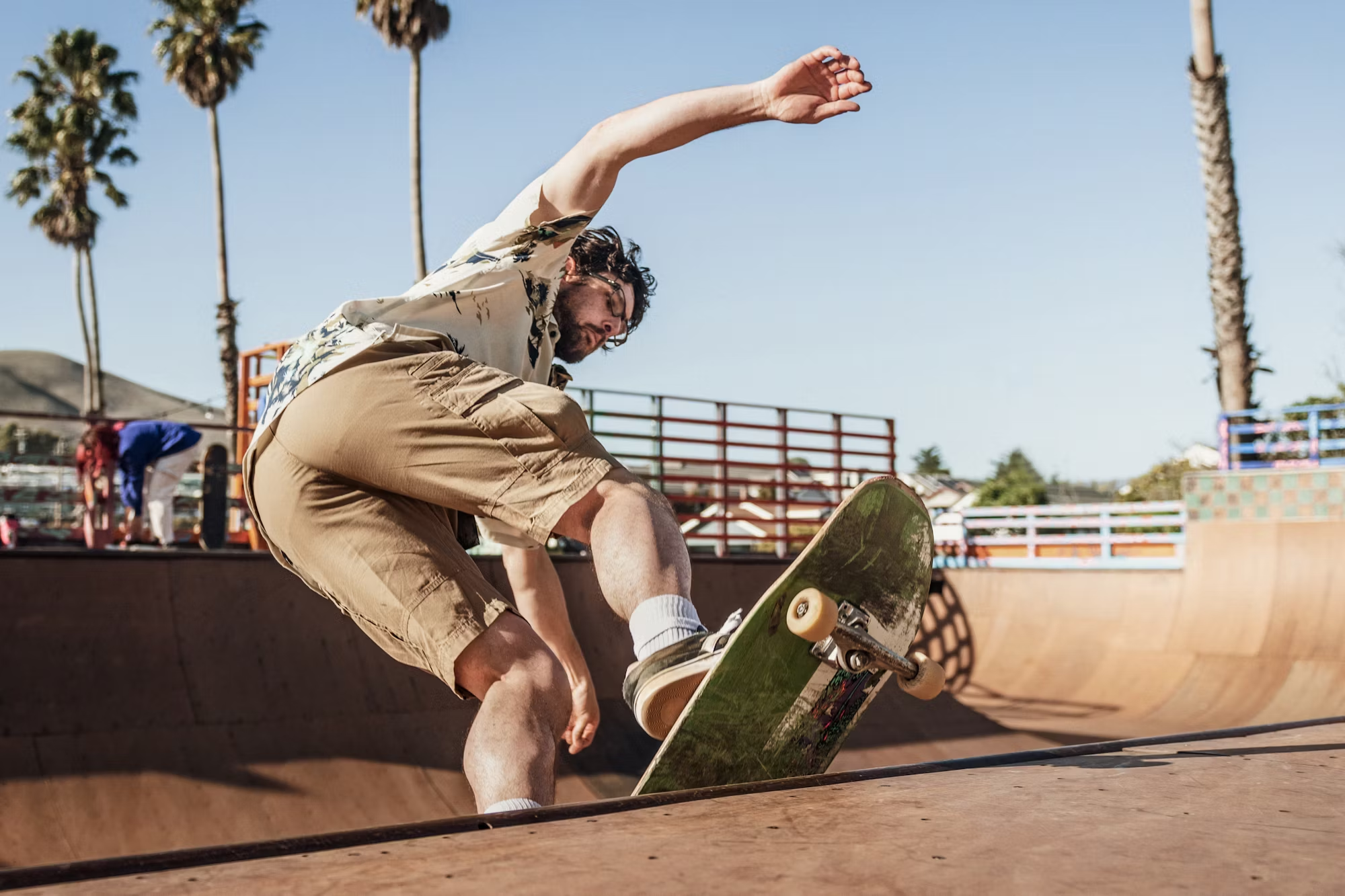Skateboarding is more than just a sport; it’s a global phenomenon that transcends geographical and cultural boundaries. Originating in California in the late 1940s and early 1950s, skateboarding has evolved into a diverse and vibrant culture embraced by millions around the world. From the bustling streets of Tokyo to the sunny beaches of Rio de Janeiro, skateboarding reflects the unique identity of each location while fostering a sense of community among riders. In this article, we will explore the global landscape of skateboarding, examining its cultural significance, variations in style, and the communities that thrive around this dynamic sport.
The Roots of Skateboarding
The inception of skateboarding can be traced back to surfers in Southern California looking for a way to practice their moves on land during flat surf days. These early skateboarders fashioned their boards from wooden planks and roller skate wheels, creating a rudimentary vehicle that would evolve over time. As skateboarding gained popularity, it captured the imagination of youth across the globe, sparking a movement that would influence countless cultures.
Skateboarding in the United States
In the United States, skateboarding became synonymous with rebellion and freedom of expression. The 1970s and 1980s saw the rise of legendary skaters like Tony Hawk and Rodney Mullen, who introduced new tricks and techniques that would shape the future of the sport. Skate parks emerged as dedicated spaces for skaters to hone their skills, fostering communities where creativity and individuality flourished.
Street skateboarding, in particular, became a defining aspect of American skate culture. Urban environments transformed into playgrounds for skaters, who utilized stairs, railings, and curbs to perform tricks. This style of skating emphasized creativity, encouraging riders to find innovative ways to interact with their surroundings. The influence of street skateboarding has extended beyond the sport itself, impacting fashion, music, and art, and creating a cultural legacy that resonates today.
Skateboarding in Europe
As skateboarding spread across Europe, it began to take on unique characteristics influenced by local cultures. Countries like the United Kingdom, France, and Germany embraced the sport, with each nation developing its own style and community. European skaters often gravitate towards street spots, utilizing the architecture of their cities to create new challenges and expressions.
In the UK, skateboarding has a rich history rooted in punk rock culture, where DIY ethos and counterculture values align with the sport. Skateparks began to sprout up in the 1980s, providing a space for skaters to practice and compete. The vibrant skate scene in London, for example, has led to a flourishing culture of street skating, with iconic spots like Southbank becoming a symbol of resistance against urban development.
France has also made its mark on skateboarding, particularly in cities like Paris, where skaters embrace a mix of street and park styles. The integration of skateboarding into mainstream culture is evident in events like the Paris Street League, which draws international competitors and showcases the best of the sport.
Skateboarding in Asia
In Asia, skateboarding has experienced explosive growth, particularly in countries like Japan and South Korea. Japan, known for its unique blend of tradition and modernity, has produced some of the world’s most innovative skaters. Tokyo, with its vibrant streets and distinctive architecture, serves as an ideal backdrop for street skating. Japanese skaters often emphasize precision and style, showcasing their skills in both competitions and videos.
The 2020 Tokyo Olympics marked a significant moment for skateboarding, as it made its Olympic debut, further solidifying its global appeal. This event not only spotlighted Japanese skaters but also attracted attention from aspiring riders around the world, inspiring a new generation to pick up a board.
In South Korea, the skateboarding scene has gained momentum, particularly among youth. The government’s investment in skate parks and urban spaces has created opportunities for skaters to practice and compete. Cities like Seoul have become hotbeds for skate culture, with skaters often gathering in popular spots to socialize and share their passion for the sport.
South America: The Passionate Community
South America is home to some of the most passionate skateboarding communities in the world. In Brazil, for instance, skateboarding is more than just a sport; it’s a way of life. The vibrant culture of Rio de Janeiro and São Paulo has fostered a unique skate scene, with riders often showcasing their skills on the streets.
The influence of Brazilian skaters has extended internationally, with figures like Bob Burnquist becoming ambassadors for the sport. The annual X Games in Brazil has further elevated the profile of skateboarding in the region, bringing together top skaters and enthusiasts to celebrate their passion.
The Role of Skateboarding in Community Development
One of the most beautiful aspects of skateboarding is its ability to bring people together. Across the globe, skateboarding has served as a platform for social change and community development. Various organizations have emerged, using skateboarding as a tool to empower youth and foster inclusivity.
In cities like Los Angeles and New York, initiatives have been established to provide skateboarding opportunities for underprivileged youth. These programs not only teach skaters essential skills but also emphasize teamwork, discipline, and self-expression. The impact of these programs can be profound, helping to build confidence and a sense of belonging among participants.
Skateboarding and Environmental Awareness
As skateboarding continues to grow, so does the awareness of environmental issues. Many skaters and organizations are taking action to promote sustainability within the sport. From advocating for eco-friendly skateboards to organizing cleanup events at skate parks, the community is increasingly conscious of its environmental impact.
Initiatives aimed at reducing waste and promoting sustainable practices are gaining traction, encouraging skaters to make more responsible choices. This movement reflects the broader societal shift towards environmental consciousness, demonstrating that skateboarding can be a platform for positive change.
The Future of Skateboarding
The future of skateboarding looks promising, with new generations of riders eager to push boundaries and explore innovative styles. The sport’s inclusion in the Olympic Games has opened doors for international competition and visibility, inspiring young athletes to take up skateboarding.
As skateboarding continues to evolve, its cultural significance remains strong. The sport fosters a sense of community, creativity, and individuality that resonates across borders. With advancements in technology, skateboarding equipment is becoming more accessible, encouraging broader participation and engagement.
In conclusion, skateboarding is a global tapestry woven with diverse cultures, styles, and communities. From its origins in California to its flourishing scenes in Europe, Asia, and South America, skateboarding reflects the spirit of innovation and expression that unites riders around the world. As the sport continues to grow and evolve, it remains a powerful tool for connection and empowerment, inviting everyone to join in the fun and creativity of riding a board. Whether in a bustling city or a quiet neighborhood, the love for skateboarding transcends borders, bringing people together in celebration of movement and freedom.



